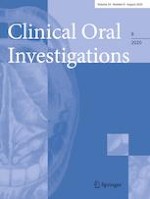Erschienen in:

23.06.2020 | COVID-19 | Discussion paper
Zur Zeit gratis
Is the oral cavity relevant in SARS-CoV-2 pandemic?
verfasst von:
David Herrera, Jorge Serrano, Silvia Roldán, Mariano Sanz
Erschienen in:
Clinical Oral Investigations
|
Ausgabe 8/2020
Einloggen, um Zugang zu erhalten
Abstract
Objectives
Recent scientific evidences suggest a relevant role of the oral cavity in the transmission and pathogenicity of SARS-CoV-2.
Methods
A literature search was performed in PubMed, up to April 30, 2020, focusing on SARS-CoV-2, COVID-19, oral cavity, and antimicrobial agents.
Results
Oral viral load of SARS-CoV-2 has been associated with the severity of COVID-19, and thus, a reduction in the oral viral load could be associated with a decrease in the severity of the condition. Similarly, a decrease in the oral viral load would diminish the amount of virus expelled and reduce the risk of transmission, since (i) during the first 10 days, the virus mainly accumulates at the nasal, oral, and pharyngeal area; (ii) the number of angiotensin-converting enzyme (ACE2) receptor is greater in the salivary glands as compared with the lungs; and (iii) salivary droplets represent the most relevant transmission route. To reduce the oral viral load, antiseptic agents may be used, although the evidence on its efficacy is indirect and weak.
Conclusions
Antiseptic mouth rinses, such as those containing cetylpyridinium chloride or povidone-iodine, may be able to decrease the severity of COVID-19 by reducing oral viral load in infected subjects and decreasing the risk of transmission by limiting viral load in droplets, generated in normal life, or in aerosols, produced during dental procedures. Well-designed clinical and preclinical research must be conducted to support these hypotheses.
Clinical relevance
Antiseptic mouth rinses may help in decreasing the severity of COVID-19 and in reducing the risk of transmission.